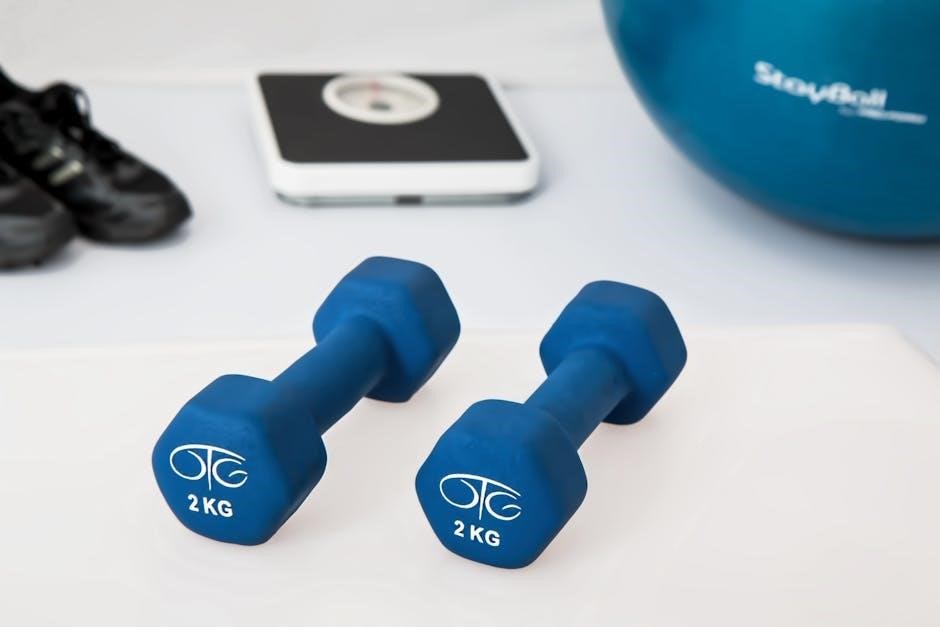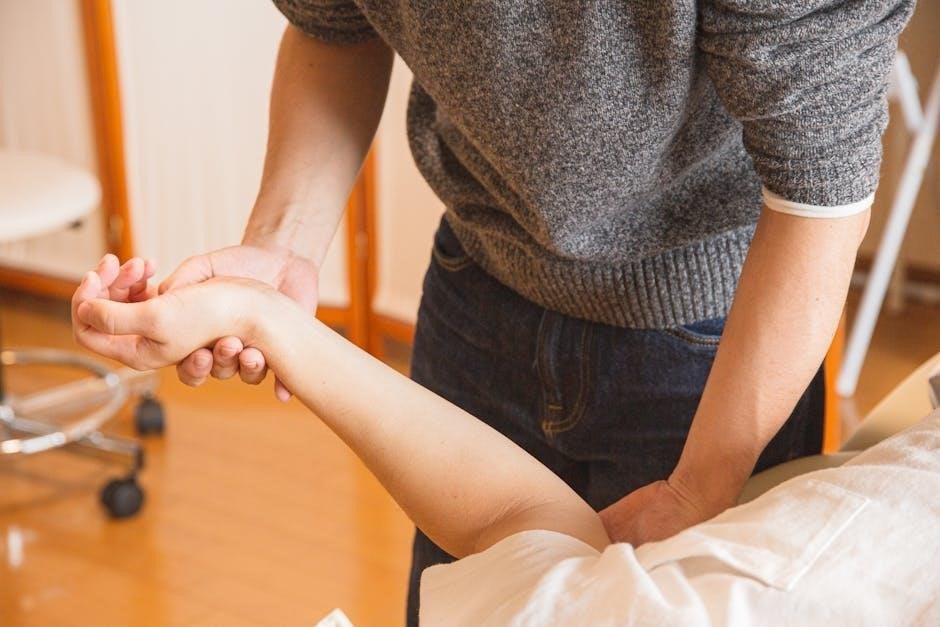Pubic Rami Fracture: An Overview
A pubic rami fracture involves a break in one of the bones forming the pelvis. These fractures often heal with time, analgesia, and therapy. This comprehensive rehabilitation protocol provides a guide for individuals recovering from a pubic rami fracture, outlining exercises and strategies.

Anatomy and Definition of Pubic Rami Fracture
The pubic rami are bony extensions that form part of the pelvis, specifically the anterior and inferior portions. A pubic rami fracture signifies a break in one or both of these bony structures. The pelvis, a ring-like structure, is crucial for weight-bearing, stability, and protecting internal organs. The superior pubic ramus extends from the pubic body to the acetabulum (hip socket), while the inferior pubic ramus extends from the pubic body to join the ischium. Fractures can occur in either or both rami, often resulting from trauma. These fractures are commonly classified based on location, displacement, and associated injuries. Understanding the anatomy is crucial for proper diagnosis, treatment, and rehabilitation. Such fractures can impact mobility and daily activities, hence requiring a comprehensive approach to healing and recovery. Rehabilitation protocols are designed to restore function and minimize complications. The pelvic floor muscles are also very important, and if they become weak, they will not function as they should.

Causes and Mechanisms of Injury
Pubic rami fractures typically arise from two primary mechanisms: high-energy trauma and low-energy injuries. High-energy events, such as motor vehicle accidents or falls from significant heights, can cause direct impact to the pelvis, leading to fractures. These fractures are often associated with other injuries due to the severity of the trauma. In contrast, low-energy injuries, such as falls in elderly individuals with weakened bones (osteoporosis), can also result in pubic rami fractures. These fragility fractures occur because the bones are less able to withstand normal stresses.
Muscle imbalances and strenuous activities may contribute to stress fractures in athletes. The specific location and pattern of the fracture can indicate the mechanism of injury. Understanding the cause is essential for guiding treatment and rehabilitation. It’s important to assess for other potential injuries, especially in high-energy trauma cases. Rapid mobilization is important, and rehabilitation is important.
Diagnosis of Pubic Rami Fracture
Diagnosing a pubic rami fracture involves a combination of physical examination, a review of the patient’s medical history, and imaging studies. A physical examination will assess pain location, range of motion, and any associated injuries. The doctor will check for tenderness, swelling, and any deformities in the pelvic region.
Imaging studies are crucial for confirming the diagnosis and determining the extent of the fracture. X-rays are typically the initial imaging modality used to visualize the pelvic bones. Computed tomography (CT) scans provide more detailed images and are helpful in identifying complex fractures or associated injuries to surrounding tissues. Magnetic resonance imaging (MRI) may be used to evaluate soft tissue injuries, such as ligament or muscle damage.
A thorough assessment will help guide the treatment plan and rehabilitation strategy. It’s important to rule out other potential causes of pelvic pain. The doctor will correlate the clinical findings with the imaging results to make an accurate diagnosis.

Non-Operative Treatment: Conservative Management
Non-operative treatment for pubic rami fractures typically involves conservative management, including pain management, protected weight-bearing as pain allows, and physical therapy. These fractures usually heal within 6-8 weeks with this approach, focusing on early mobilization and rehabilitation.
Pain Management and Analgesia
Effective pain management is crucial in the early stages of pubic rami fracture rehabilitation. Analgesia, including over-the-counter pain relievers like acetaminophen or ibuprofen, may be sufficient for mild to moderate pain. However, stronger prescription pain medications might be necessary for more severe discomfort, always under the guidance of a physician.
Alongside pharmacological interventions, non-pharmacological strategies play a vital role. These can include ice or heat therapy applied to the affected area to reduce inflammation and ease pain. Gentle range-of-motion exercises, as tolerated, can help prevent stiffness and improve circulation, indirectly contributing to pain relief.
Patient education is paramount; individuals should understand their pain medication regimen, potential side effects, and alternative pain management techniques. Encouraging open communication with the healthcare team ensures that the pain management plan is tailored to individual needs and effectively promotes comfort throughout the rehabilitation process. Furthermore, alternative therapies like acupuncture or massage may be considered as adjunct treatments for pain relief.
Weight-Bearing and Mobility
Weight-bearing progression following a pubic rami fracture is guided by pain levels and healing progress. Initially, patients often begin with non-weight-bearing or toe-touch weight-bearing, utilizing assistive devices like crutches or a walker for support. As pain subsides and bone healing progresses, weight-bearing is gradually increased under the supervision of a physical therapist.
Early mobility exercises, even while non-weight-bearing, are essential to maintain joint flexibility and prevent muscle atrophy. These may include gentle ankle pumps, knee bends, and hip rotations within a pain-free range. As weight-bearing increases, exercises progress to include short ambulation distances, gradually increasing stride length and speed.
Close monitoring of pain and stability is crucial throughout this process. Any increase in pain or instability warrants a reassessment and potential adjustment to the weight-bearing protocol. The ultimate goal is to achieve full weight-bearing without pain or compensatory gait patterns, allowing for a safe and functional return to daily activities. Assistive devices are weaned off as strength and balance improve.
Rehabilitation Protocol: A Step-by-Step Guide
This protocol offers a structured approach to pubic rami fracture recovery. It outlines essential exercises, progressive weight-bearing activities, and strategies for a safe and effective return to daily life, promoting optimal healing and functional restoration after the injury.
Early Phase: Pain Reduction and Inflammation Control
The initial phase of pubic rami fracture rehabilitation focuses on managing pain and reducing inflammation. This involves a combination of strategies to promote comfort and facilitate the healing process. Pain management is typically achieved through analgesia, as prescribed by a physician, ensuring the patient can participate in early rehabilitation exercises without undue discomfort.
Alongside medication, rest and activity modification are crucial. Patients are advised to avoid activities that exacerbate pain, allowing the fracture site to heal. Ice packs applied to the affected area can further reduce inflammation and provide localized pain relief. Elevation of the pelvis, when resting, can also aid in minimizing swelling.
Gentle range-of-motion exercises, performed within pain limits, are introduced early to prevent stiffness and maintain joint mobility. These exercises should be carefully guided by a physical therapist. The focus is on pain reduction and inflammation control to allow progression to the next phase of rehabilitation.
Intermediate Phase: Strengthening and Range of Motion Exercises
Building upon the foundation established in the early phase, the intermediate phase of pubic rami fracture rehabilitation centers on restoring strength and expanding range of motion. As pain and inflammation subside, exercises are progressively intensified to challenge the healing tissues and improve functional capacity.
Strengthening exercises target the muscles surrounding the pelvis, hip, and core, providing stability and support. These may include isometric contractions, resistance band exercises, and bodyweight movements. Range of motion exercises aim to regain full joint mobility, addressing any stiffness or limitations that may have developed during the immobilization period.
Exercises such as hip flexor stretches, hamstring stretches, and gentle pelvic tilts are incorporated to improve flexibility and reduce muscle imbalances. It is crucial to perform these exercises under the guidance of a physical therapist, ensuring proper form and technique to prevent re-injury. Monitoring pain levels throughout the exercises is essential, and adjustments should be made as needed to avoid overexertion. The goal is to progressively increase strength and range of motion.
Advanced Phase: Functional Activities and Return to Daily Life
The advanced phase of pubic rami fracture rehabilitation focuses on restoring functional abilities and facilitating a safe return to daily activities. Building upon the strength and range of motion gained in the intermediate phase, this stage involves progressively challenging exercises that mimic real-life movements.
Functional activities such as walking, stair climbing, and lifting are gradually reintroduced, with careful attention to proper form and technique. Exercises may include squats, lunges, and step-ups to improve lower body strength and stability. Balance and coordination exercises are incorporated to enhance proprioception and reduce the risk of falls.
The goal is to gradually increase the intensity and duration of activities, while closely monitoring pain levels and any signs of re-injury. A physical therapist will provide guidance on modifying activities as needed and developing strategies for managing any residual pain or discomfort. As individuals progress, they can gradually return to their pre-injury level of activity, with a focus on maintaining proper body mechanics and avoiding excessive strain on the healing tissues. The advanced phase culminates in a safe and confident return to daily life.
Surgical Intervention (ORIF) and Post-Operative Rehabilitation
Surgical intervention, specifically Open Reduction and Internal Fixation (ORIF), may be necessary for certain pubic rami fractures, particularly those that are displaced or unstable. ORIF involves surgically realigning the fractured bone fragments and securing them in place with hardware such as plates and screws. Following ORIF, a structured post-operative rehabilitation program is crucial for optimal recovery.
The initial phase focuses on pain management, edema control, and wound care. Gentle range-of-motion exercises are introduced to prevent stiffness, while weight-bearing restrictions are typically implemented to protect the healing bone. As healing progresses, the rehabilitation program advances to include strengthening exercises for the surrounding muscles, such as the hip flexors, extensors, and abductors.
Balance and proprioception exercises are incorporated to improve stability and coordination. Functional activities, such as walking and stair climbing, are gradually reintroduced as tolerated. The rehabilitation timeline varies depending on the severity of the fracture, the individual’s healing response, and the presence of any complications. Close communication between the surgeon, physical therapist, and patient is essential to ensure a successful outcome and a safe return to daily activities.
Potential Complications and Management
While most pubic rami fractures heal without significant issues, potential complications can arise, necessitating prompt management. These complications may include nonunion or malunion, where the fracture fails to heal properly or heals in a misaligned position, potentially leading to chronic pain and functional limitations. Infection is another risk, especially following surgical intervention, requiring antibiotics and potentially further surgical debridement.
Nerve or vascular injury can occur during the initial trauma or surgical procedure, leading to sensory deficits, weakness, or compromised blood flow. Deep vein thrombosis (DVT) is a concern due to immobilization, requiring prophylactic measures like anticoagulation and early mobilization. Another potential complication is pelvic floor dysfunction, which can manifest as urinary or fecal incontinence, or sexual dysfunction, necessitating specialized pelvic floor rehabilitation.
Pain management is crucial throughout the recovery process, addressing both acute and chronic pain. Early mobilization and weight-bearing as tolerated are encouraged to prevent stiffness and promote healing. In cases of nonunion, malunion, or nerve injury, further surgical intervention may be required. A multidisciplinary approach involving orthopedic surgeons, physical therapists, pain management specialists, and other healthcare professionals is essential for comprehensive management of potential complications.

Expected Healing Time and Outcomes
The expected healing time for a pubic rami fracture typically ranges from 6 to 8 weeks, although this can vary depending on the severity of the fracture, the individual’s age, overall health, and adherence to the rehabilitation protocol. In some cases, healing may take longer, particularly if complications arise or if the individual has underlying medical conditions that impair bone healing.
The anticipated outcomes following a pubic rami fracture are generally positive, with most individuals regaining full function and returning to their pre-injury activity levels. Early mobilization, appropriate pain management, and a structured rehabilitation program are crucial for achieving optimal outcomes. The rehabilitation process focuses on restoring strength, range of motion, and stability to the pelvis and surrounding structures.
While most individuals experience a successful recovery, some may experience persistent pain or functional limitations, especially if complications such as nonunion or malunion occur. In these cases, further medical or surgical intervention may be necessary. Adherence to the rehabilitation protocol, including performing prescribed exercises and following weight-bearing guidelines, is essential for maximizing the chances of a successful outcome and minimizing the risk of long-term complications. Regular follow-up appointments with healthcare providers are also important for monitoring progress and addressing any concerns that may arise;
